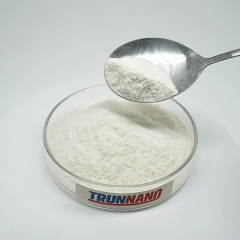Technical Parameters of Powdered Immediate Salt Silicate (CAS 1344-09-8)
(Technical Parameters of Powdered Instant Sodium Silicate (CAS 1344-09-8))
Note: We can additionally personalize salt silicate powder with moduli of 2.45, 2.5, and 3.4 according to your requirements.
Our Series Of Salt Silicate Moduli
We provide powdered immediate sodium silicate with moduli ranging from 2.0 to 3.3. Furthermore, we can personalize sodium silicate powder with moduli of 2.45, 2.5, and 3.4 to fulfill your particular needs.
Introduction
With a growing worldwide emphasis on environmental management and sustainable development, salt silicate, additionally called water glass or soluble glass, has actually garnered considerable interest in different markets owing to its diverse uses. This inorganic compound acts as a crucial component in construction, papermaking, and detergent manufacturing. Recently, standard phosphorus-based cleaning agent ingredients such as salt tripolyphosphate (STPP) have been slowly gotten rid of because of their adverse results on aquatic ecological communities. In this context, the requirement for effective and ecologically secure choices has ended up being urgent. Sodium silicate, with its special attributes, has entered the spotlight as an appealing option.
Market Opportunities
1. Global Need Patterns
The global production of concentrated synthetic detergents has actually seen stable growth, particularly with the climbing share of ultra-concentrated powders. It is approximated that at least 230,000 tons of sodium silicate were required in 2000 alone to meet market demand. Provided the present restricted global supply, there is a substantial void between supply and demand, showing substantial possibility for development. As customers’ need for top quality and environment-friendly items increases, the marketplace for salt silicate is anticipated to increase better.
2. International Competitive Landscape
Contrasted to similar items created internationally, Chinese-manufactured sodium silicate often supplies an extra competitive price and equivalent or perhaps remarkable top quality. For instance, the FOB rate of sodium silicate in the United States is around $51.15 per 100 extra pounds, while rates in Europe are even greater. This cost benefit settings Chinese producers highly in the worldwide market. By continuously innovating and improving product quality, Chinese manufacturers have the prospective to capture a bigger share of the global market.
Review of Salt Silicate
Sodium silicate is a compound developed from silicon dioxide (SiO โ) and sodium oxide (Na โ O), typically stood for by the formula Na โ O ยท nSiO โ, where n varies depending upon the certain type. It is defined by excellent solubility, a high pH level, and outstanding cleaning residential or commercial properties, making it a suitable cleaning agent additive. Past its usage in cleaning agents, salt silicate is commonly used in the building and construction industry, such as in waterproofing products and sealers. In the paper sector, it boosts the toughness and smoothness of paper. Additionally, it finds applications in textile dyeing, oil extraction, and other fields.
Production Process
1. Resources Preparation: The first action includes selecting appropriate resources, consisting of silica sand or soluble glass, together with caustic soft drink.
2. Dissolution Phase: The raw products are blended and heated to a proper temperature to help with dissolution, making certain complete mixing of all elements.
3. Crystallization Control: Details problems are controlled to promote the formation of wanted crystal structures in the solution. Temperature and pressure parameters have to be specifically managed throughout this phase.
4. Filtration and Purification: To make certain the pureness of the final sodium silicate item, a plate and framework filter press is used to get rid of undesirable wetness and impurities.
5. Drying and Creating: Spray drying innovation is employed to reduce the wetness content additionally, causing a powder form that is very easy to store and transportation.
Cost-Benefit Analysis
From an economic perspective, the manufacturing of sodium silicate provides clear cost advantages. For a plant with a yearly ability of 5,000 bunches, the cost failure is as follows:
1. Variable Expenses: Around $346.71 per heap, including raw materials (silica sand/soluble glass and caustic soft drink), energy intake (electrical energy and gas), and labor expenses.
2. Fixed Costs: Around $141,400 every year, covering devaluation of set possessions, maintenance, monitoring charges, funding rate of interest, and other expenditures.
3. Total Expenses: The mixed overall expense is approximated at $385.71 per bunch.
4. Sales Profits: With an estimated asking price of $642.86 per heap, the earnings margin per lot would be approximately $257.15.
( sodium silicate)
5. Economic Conveniences: The task can create a yearly profits of around $3.21 million, adding approximately $1.29 million in tax income.
This cost-benefit analysis shows that salt silicate not only provides considerable technological benefits but is likewise very economically viable. For manufacturing firms, purchasing the production and promo of salt silicate can generate considerable financial returns while boosting their company social responsibility image.
Verdict
In recap, salt silicate, with its premium technical performance and reduced manufacturing costs, holds terrific possible as a substitute for traditional phosphorus-based additives. Taking into account progressively stringent environmental laws and the expanding consumer need for high-grade, eco-friendly items, increasing the research study, growth, and commercialization of salt silicate will certainly be an essential vehicle driver in the change of the worldwide cleaning agent market. For financiers, entering this area not just adds to business social obligation yet also assures appealing financial returns and societal advantages. With continuous technological innovations and a broadening market, the possible uses of sodium silicate are substantial and quality additional investigation and development by market stakeholders and research study bodies.
TRUNNANO is a supplier of Sodium Silicate Materials with over 12 years of experience in nano-building energy conservation and nanotechnology development. It accepts payment via Credit Card, T/T, West Union and Paypal. Trunnano will ship the goods to customers overseas through FedEx, DHL, by air, or by sea. If you want to know more about waterglass solution, please feel free to contact us and send an inquiry(sales5@nanotrun.com).
All articles and pictures are from the Internet. If there are any copyright issues, please contact us in time to delete.
Inquiry us

